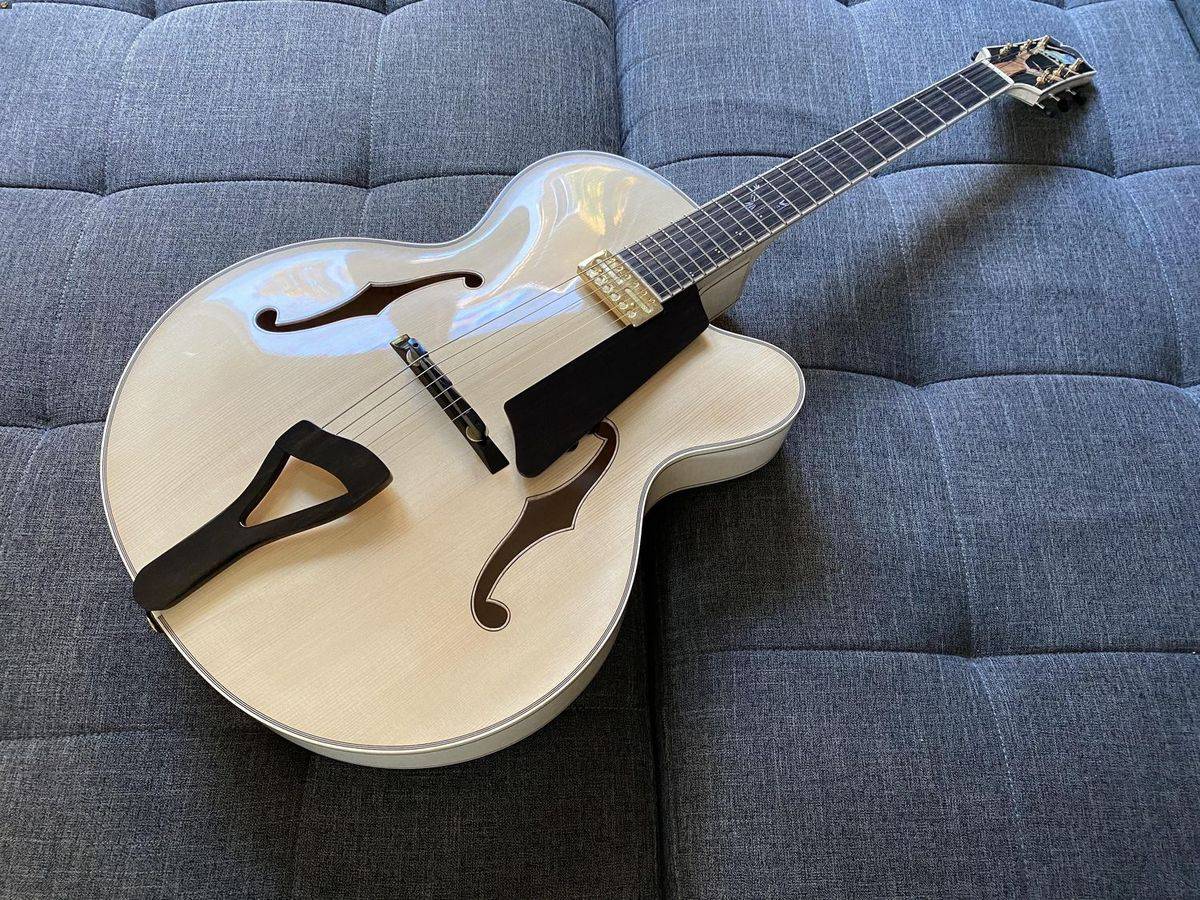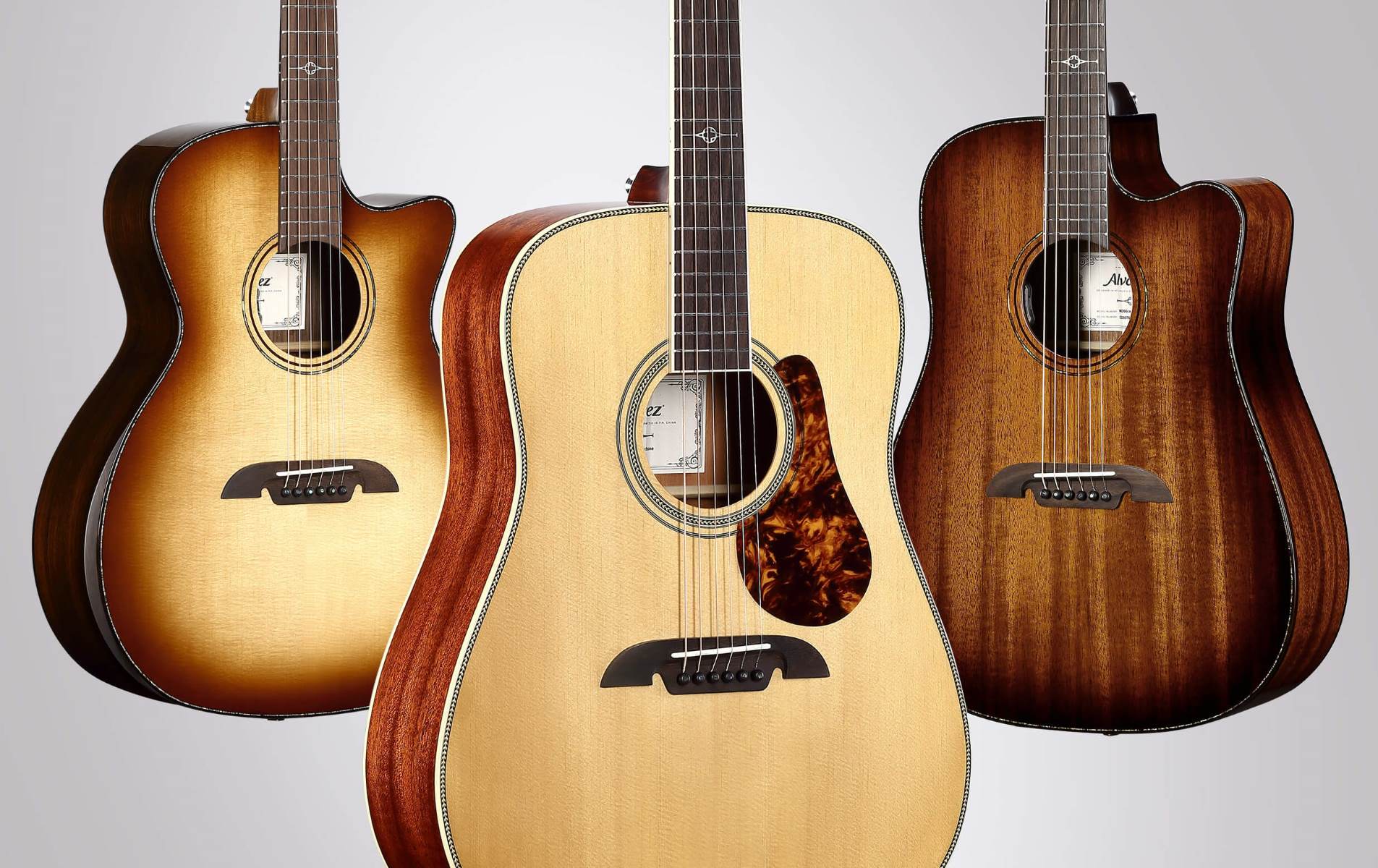Home>Instruments>Guitar>What Is The Nut On A Guitar


Guitar
What Is The Nut On A Guitar
Published: February 15, 2024
Discover the role of the nut on a guitar and how it influences the instrument's tone and playability. Learn about different types and materials used in guitar nuts.
(Many of the links in this article redirect to a specific reviewed product. Your purchase of these products through affiliate links helps to generate commission for AudioLover.com, at no extra cost. Learn more)
Table of Contents
Introduction
The nut on a guitar is a seemingly small yet crucial component that plays a significant role in the instrument's overall performance and playability. Positioned at the top of the guitar's neck, the nut is a strip of material, typically made of bone, plastic, or synthetic materials, with narrow grooves to guide the strings to the tuning pegs. This unassuming piece is responsible for maintaining string spacing, supporting string tension, and facilitating precise intonation – all of which directly impact the guitar's sound and playability.
The nut's significance is underscored by its influence on the guitar's tone and resonance. Its ability to maintain proper string spacing and height not only affects the playability of the instrument but also contributes to the quality of sound produced. Furthermore, the nut plays a pivotal role in ensuring accurate intonation, which is essential for producing harmonious chords and melodies across the fretboard.
Understanding the construction, function, and maintenance of the nut is paramount for guitarists seeking to optimize their instrument's performance. This article delves into the anatomy of a guitar nut, the various types available, their functions, the materials used in their construction, and essential maintenance practices to preserve the nut's integrity and prolong the guitar's lifespan. Whether you're a seasoned guitarist or a novice enthusiast, exploring the intricacies of the nut will deepen your appreciation for this unassuming yet indispensable component of the guitar.
Anatomy of a Guitar
Before delving into the specifics of the guitar nut, it’s essential to grasp the fundamental components of the instrument. The main parts of a guitar include the body, neck, headstock, fretboard, and, of course, the nut. The nut is located at the junction of the headstock and the fretboard, serving as the point of origin for the strings.
The nut consists of grooves, known as slots, where the strings sit before extending along the fretboard. These slots are meticulously crafted to ensure proper string spacing and alignment, allowing for smooth and accurate string vibration. Additionally, the nut’s height is carefully adjusted to maintain an optimal distance between the strings and the frets, thereby influencing the instrument’s playability and intonation.
Furthermore, the nut’s material composition significantly impacts its functionality. Common materials used for nuts include bone, synthetic materials like TUSQ or Corian, and various types of plastic. Each material offers distinct characteristics that can influence the guitar’s tone, sustain, and tuning stability.
Understanding the role of the nut within the broader context of the guitar’s construction provides valuable insight into its functionality and impact on the instrument’s overall performance. The precise engineering and placement of the nut are essential for ensuring the guitar’s playability, intonation, and tonal characteristics.
Types of Nuts
Guitar nuts are available in various types, each offering distinct characteristics that can influence the instrument’s playability and tonal qualities. The most common types of nuts include those made from bone, synthetic materials such as TUSQ or Corian, and different forms of plastic.
Bone nuts are revered for their tonal properties, as they can enhance the guitar’s resonance and sustain. The dense nature of bone contributes to improved string vibration transfer, resulting in a rich and vibrant tone. Additionally, bone nuts are known for their durability and ability to maintain precise string spacing over time.
Synthetic materials like TUSQ and Corian have gained popularity in the guitar manufacturing industry due to their consistent density and self-lubricating properties. These materials offer excellent tonal clarity and sustain while reducing friction at the nut, thereby contributing to tuning stability and smooth string movement.
Plastic nuts, including those made from materials like ABS or nylon, are commonly found on entry-level or mass-produced guitars. While they may not offer the same tonal benefits as bone or synthetic nuts, well-crafted plastic nuts can still provide reliable performance and durability at an affordable cost.
Furthermore, there are specialized nuts, such as locking nuts used in tremolo systems, which are designed to secure the strings firmly in place to maintain tuning stability during aggressive tremolo bar usage. These locking nuts feature clamps that hold the strings in position, preventing slippage and minimizing the need for frequent retuning.
Understanding the characteristics of different nut materials and designs empowers guitarists to make informed choices when customizing or upgrading their instruments. Whether prioritizing tonal enhancement, tuning stability, or durability, selecting the right type of nut is integral to optimizing the guitar’s performance and sonic capabilities.
Functions of the Nut
The nut on a guitar serves several critical functions that directly impact the instrument’s playability, tone, and overall performance. Understanding these functions is essential for appreciating the nut’s significance within the guitar’s construction and operation.
First and foremost, the nut is responsible for maintaining proper string spacing. The grooves or slots in the nut are precisely crafted to ensure that the strings are evenly spaced, allowing for consistent and comfortable fretting across the fretboard. This function is crucial for facilitating smooth chord transitions and precise note articulation, ultimately enhancing the player’s experience.
Furthermore, the nut plays a pivotal role in supporting string tension. By securely anchoring the strings at the headstock, the nut enables them to maintain the necessary tension for producing clear and resonant tones. The nut’s ability to withstand string tension without slipping or causing binding is essential for preserving tuning stability and sustaining the guitar’s intonation.
Precise intonation, which refers to the accuracy of pitch across the fretboard, is also heavily influenced by the nut. Properly positioned and shaped nut slots contribute to consistent intonation, ensuring that the guitar produces harmonious notes and chords at every fret position. This function is integral to the instrument’s overall tonal quality and the guitarist’s ability to play in tune across the entire fretboard.
Moreover, the nut’s material composition and construction can impact the guitar’s sustain and resonance. Materials like bone and synthetic compounds are favored for their ability to enhance string vibration transfer, resulting in improved sustain and tonal richness. The nut’s role in shaping the guitar’s sonic characteristics highlights its significance beyond mere structural support.
By fulfilling these functions, the nut fundamentally shapes the playing experience and sonic capabilities of the guitar. Its influence on string spacing, tension support, intonation, and tonal properties underscores its indispensable role in maintaining the instrument’s overall performance and playability.
Materials Used for Nuts
The choice of material for constructing guitar nuts significantly influences the instrument’s tone, playability, and overall performance. Various materials are employed in nut production, each offering distinct characteristics that cater to different preferences and playing styles.
Bone is a traditional and revered material for crafting guitar nuts. Renowned for its density and tonal properties, bone nuts contribute to enhanced sustain, resonance, and clarity. The dense nature of bone allows for efficient transfer of string vibrations, resulting in a vibrant and articulate tone. Additionally, bone nuts are valued for their durability and ability to maintain precise string spacing over time, making them a popular choice among discerning guitarists.
Synthetic materials, such as TUSQ and Corian, have gained prominence in the guitar manufacturing industry due to their consistent density and self-lubricating properties. TUSQ, a proprietary synthetic material, offers tonal characteristics similar to bone while providing enhanced tuning stability and self-lubrication at the nut. Corian, commonly used in kitchen countertops, has also found application in nut production, offering reliable performance and tonal clarity.
Various forms of plastic, including ABS and nylon, are commonly utilized in the production of guitar nuts, particularly in entry-level and mass-produced instruments. While plastic nuts may not offer the same tonal benefits as bone or synthetic materials, well-crafted plastic nuts can provide dependable performance and durability at a lower cost, making them suitable for budget-friendly guitars.
The choice of nut material is a crucial consideration for guitarists seeking to customize or upgrade their instruments. Each material presents unique tonal characteristics, durability, and maintenance requirements, allowing players to tailor their guitar’s performance to align with their musical preferences and playing style.
Nut Maintenance and Care
Proper maintenance of the guitar nut is essential for preserving its functionality, ensuring optimal playability, and prolonging the instrument’s lifespan. By implementing regular care practices, guitarists can mitigate common issues associated with nuts, such as string binding, wear, and intonation discrepancies.
One fundamental aspect of nut maintenance is keeping the nut slots clean and free from debris. Accumulated dirt, grime, or corrosion in the nut slots can impede string movement and cause tuning instability. Regularly inspecting and cleaning the nut slots with a soft, lint-free cloth or a specialized nut slot cleaning tool can prevent these issues and maintain smooth string action.
String lubrication at the nut is another crucial maintenance consideration. Applying a small amount of nut lubricant, such as graphite or specialized guitar lubricants, to the nut slots reduces friction and binding, promoting stable tuning and minimizing string breakage. Proper lubrication also facilitates precise string movement, contributing to accurate intonation and improved playability.
Periodic inspection of the nut for signs of wear or damage is imperative for addressing potential issues before they escalate. Excessive wear in the nut slots can lead to string buzzing, tuning instability, and intonation problems. If wear is detected, seeking professional assistance to repair or replace the nut can prevent further damage and maintain the guitar’s performance.
Climate and environmental factors can also impact the nut’s stability and integrity. Fluctuations in humidity and temperature can affect the nut’s material, leading to expansion, contraction, or warping. Storing the guitar in a controlled environment and utilizing humidifiers or dehumidifiers when necessary can help mitigate these effects and preserve the nut’s structural integrity.
Furthermore, regular string changes and proper string winding techniques contribute to nut longevity and performance. Ensuring that the strings are correctly wound around the tuning posts reduces unnecessary stress on the nut and promotes consistent string tension, enhancing tuning stability and overall playability.
By incorporating these maintenance practices into their guitar care routine, players can safeguard the nut’s functionality and contribute to the instrument’s sustained performance and tonal quality.
Conclusion
The nut on a guitar, despite its modest size, holds immense significance in shaping the instrument’s playability, tone, and overall performance. As a vital component of the guitar’s anatomy, the nut influences string spacing, tension support, intonation, and tonal properties, thereby directly impacting the player’s experience and the instrument’s sonic capabilities.
Understanding the diverse materials used for nut construction, including bone, synthetic compounds, and various forms of plastic, empowers guitarists to make informed decisions when selecting or customizing their instrument. Each material offers distinct tonal characteristics, durability, and maintenance requirements, allowing players to tailor their guitar’s performance to align with their musical preferences and playing style.
Moreover, the maintenance and care of the nut are integral for preserving its functionality and prolonging the guitar’s lifespan. Regular cleaning, lubrication, inspection for wear, and environmental considerations contribute to the nut’s longevity and stability, ensuring consistent playability and tonal quality.
By recognizing the multifaceted role of the nut within the broader context of the guitar, players gain a deeper appreciation for this unassuming yet indispensable component. Whether seeking to optimize their current instrument’s performance, customize a new guitar, or simply deepen their understanding of the instrument’s construction, delving into the intricacies of the nut enriches the guitarist’s connection with their craft.
In essence, the nut embodies the meticulous craftsmanship and attention to detail that define the art of guitar making. Its unassuming presence at the headstock serves as a testament to the profound impact of even the smallest components in shaping the instrument’s character and sonic identity.
Ultimately, the nut stands as a testament to the intricate symbiosis of artistry and engineering that underpins the world of guitars, enriching the player’s journey and the instrument’s enduring legacy.











